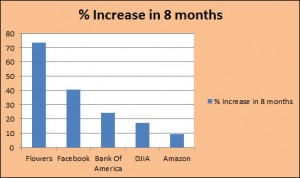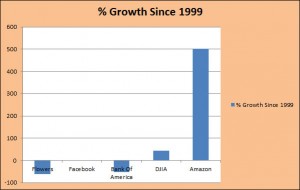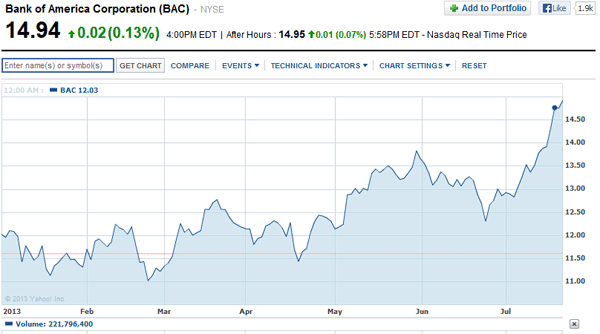
– Joe Moore
What is a CD ladder?
At its most basic level, a CD ladder is a portfolio of certificates of deposit that you arrange much the same way you would any other type of investment portfolio. The idea is to create a portfolio of CDs that includes both different interest rates and different maturity dates.
In a real way, this is something like building your own money market fund. And while putting your money into a money market fund would certainly be simpler than creating a CD ladder, the returns on those accounts are close to zero right now. CD rates are low by historic standards as well, but by building a CD ladder you’ll have an opportunity to earn a better return on your money, certainly better than money market funds.
You can always put all of your money into a single CD that pays the highest rate. You might decide for example, to put all of your money in a five year CD as a way of maximizing your return on investment. But what happens if sometime during the five-year period interest rates rise, and rise substantially? Your money will be tied up in your five year CD while better rates can be had in other CDs. Sure, you can usually terminate the CD early, but that will result in early withdrawal penalties that will reduce the rate of return on future investments.
You can avoid that fate with a CD ladder. Let’s say that you have $30,000 that you plan to invest in fixed income assets, like CDs. Rather than putting all of the money into a single CD, you can invest smaller amounts in various CDs, either at different intervals or with CDs of different maturities. We’ll discuss both methods in a minute.
Why would you want to build a CD ladder?
Before we get into CD ladder strategies, let’s spend a little bit of time considering why you should put some of your money into CDs in the first place. There are several reasons:
- When equity investments, like stocks, begin to fall – and they will sooner or later – there’s nothing like the safety of cash-type assets, especially those that pay interest. Though you may not make a fortune with CDs, you won’t lose any money either. That’s a winning investment in a bear market.
- You should always have at least some of your money sitting in fixed rate investments, even if you are an aggressive investor.
- CDs will preserve your capital during a market downturn, so that you will have cash to buy stocks when the market turns up again. CDs are the perfect place to park your money.
- In the current market environment, CDs pay higher interest rates than money market funds. Many money market funds are currently paying less than 1/10 of 1% in interest.
- Non-bank money market funds are not insured by the FDIC the way CDs are.
Now that you know why you should invest in CDs, let’s talk about some CD ladder strategies…
Building a CD ladder – it’s not complicated
Building a CD ladder will probably be one of the less complicated investment ventures you will ever enter. It’s certainly easier than either the stock market, where you have to worry about unstable asset prices, or real estate, where you incur a large number of transaction fees.
CDs are completely stable assets with guaranteed returns, and there are no fees to set them up directly with a bank. And you can do this either online or, if you’re not tech savvy, you can do it through a local bank where bank personnel will handle all the paperwork for you. They’ll even create and maintain a CD renewal schedule based on your preferences.
Building the actual CD ladder will simply be a matter of deciding upon the right mix of CD maturities, or the sequence of CDs purchased.
Laddering for interest rate return
Generally speaking, the longer the term of the CD, the higher the interest rate it will pay. If you are laddering for maximum interest return, you may want to create a portfolio of CDs with various maturities – which is where the term “ladder” comes into the picture.
Your ladder may consist CDs maturing in six months, one year, 18 months, two years, 30 months, five years, and so on. In this way, the staggering of maturities will provide you with the maximum rate of return on the portfolio. The certificates with longer maturities will give your ladder a higher rate of return than if you were invested entirely short-term CDs.
The staggering of maturities will also give you the option to participate in higher-paying CDs in the event that interest rates rise. So for example, while you’ll be locked into longer terms with certificates maturing in 18 months to five years, those of shorter duration can be rolled over into higher-paying certificates as they mature.
Laddering for maximum liquidity
Maximum interest rates are not the only reason why people invest in CDs, and certainly not CD ladders. For many investors, liquidity is more important than return on investment, particularly in a low interest rate environment. If this describes you, then you can also ladder your CDs for maximum liquidity.
You can do this by investing your money in short-term certificates, and do it in such a way that while you are investing in one CD, another one is coming due. With this type of ladder, you’ll always have cash available for any purpose needed.
Let’s say that you have $30,000 that you want to invest in certificates of deposit. Instead of putting the entire amount into a 180 day CD, or even a 90 day CD, you can break up the portfolio into 12 equal parts of $2,500, and invest in a new CD each month. Each chunk can be invested in a 12 month CD, and you do so at regular monthly intervals.
Over the course of one year, you will have built a CD ladder 12 CDs of $2,500 each, with one maturing and one renewing each month of the year. When a CD matures, you will have the option to either roll it over into another CD, or take the cash for an unrelated purpose.
This can be a perfect strategy if you are an active investor with an ongoing need for cash. And at the same time, it’s a way to add safety and predictability to an otherwise high risk portfolio.
If the stock market is starting to give you a nose bleeds, look in to CDs – and CD ladders in particular. They’re a great place to be when the stock market starts tossing and turning.


